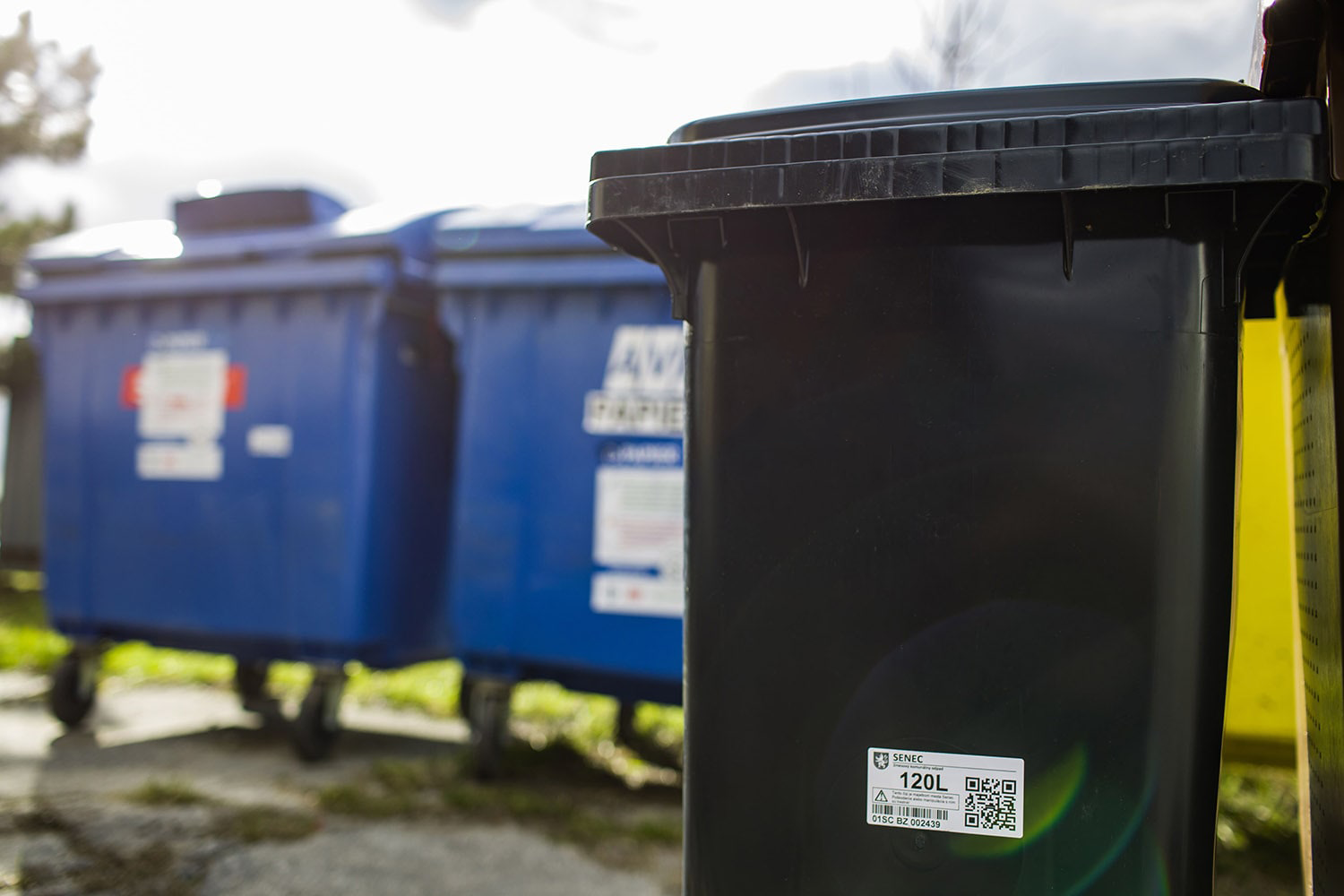Radio frequency identification or RFID is a widely used technology that we all come across in our daily lives. We can find it in shops, libraries and even in waste management.

What exactly is it and how can an RFID tag change the way we manage waste?
Label types
An RFID label or tag is an electronic device without its own power supply. It consists of an antenna that communicates with the reader and a microchip that contains a unique identifier. The chip contains coded data that identifies the container or bag. RFID tags can be passive or active.
Active tags have their own battery, which allows them to transmit signals over greater distances and record more complex data. In the field of waste management, passive labels are used more.
Passive tags are powered by the signal sent by the reader and therefore do not require their own battery. Their simplicity and maintenance-free nature make them ideal for labeling waste containers. It is enough if the scanned label is within the range of the sensor, as it is able to transmit a radio signal through various materials and at different distances (from a few centimeters to several meters).
Labels can be of different shapes, sizes, and materials. When labeling waste containers, we use plastic labels (hard tags) or labels in the form of self-adhesive labels (soft tags). “Hard tags” are physically more resistant to damage and unauthorized removal. On the other hand, “soft tags” are easier to install on containers and can also be glued to bags.

Advantages of RFID technology
The advantages of RFID technology in waste management are many. The first and most important is the accuracy of the identification. RFID enables unambiguous tracking of each container, which means we know exactly when and where the container was emptied.
Another advantage is process automation. RFID tags enable automatic identification, which means that the collection workers are not burdened with manual scanning. In this way, not only time is saved, but also a more efficient use of manpower compared to manual scanning.
Reducing errors in waste management is another advantage of RFID systems. Manual systems can be prone to errors that can lead to incorrect waste tracking and incorrect billing. RFID eliminates this possibility of errors, thus contributing to more accurate and reliable tracking of waste.
By implementing the ESONA system, you will get comprehensive real-time information about all waste containers. Each dump is recorded contactless and automatically added to the database. Thanks to the data and the connection with the information system of the municipality, the municipality, and the taxpayer have at their disposal the exact number of exported containers, their filling, and the exact time of dumping. Comprehensive records and management of waste management are the basis for the calculation of fair and targeted fees for municipal waste and the basis for transparent relations.
The use of the ESONA system and RFID technology in labeling waste containers is therefore not only a modern but also an effective solution. It helps simplify waste tracking, minimize errors, and contribute to a more sustainable waste management. It is a step towards intelligent and efficient waste management.
